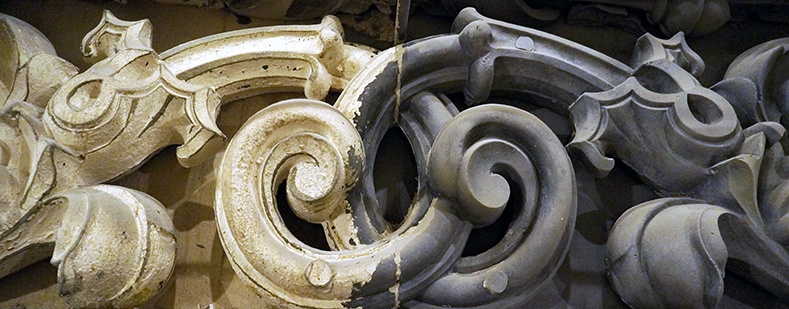When making decisions regarding lead abatement, facility managers naturally consider a whole host of complex variables. Their recommendations will be used to ultimately decide whether lead-coated surfaces be enclosed and encapsulated, replaced—or removed altogether. In making their recommendation, they need a ready answer to ownership’s question, “What’s it going to cost us and what gambles are we taking?”
Let’s take a quick glance at enclosing, encapsulating, replacing, and removing lead—with upfront and longterm costs in the forefront of our minds.
Encapsulating Lead Paint
The option of enclosing and encapsulating refers to the installation or application of durable protective layers to cover over lead-painted surfaces. Durable material such as aluminum panels, sheets of plywood, or gypsum board are used to enclose lead-contained surfaces, while encapsulating most often involves spray, brush, or roller application of a coating material that binds to the lead-painted surfaces. While enclosing and encapsulating tend to offer lower upfront costs, the overarching problem is that the lead hazard is still present, deferring removal costs to another day when costs could be much higher.
Replacing Lead Coated Assets
Replacing lead-coated assets comprises of complete removal the offending coated asset from the facility. This is a viable option when the replacement cost of the asset is less than the cost of lead paint removal. This option can be well-suited for projects including the removal of a few doors, door frames, and window frames, but may not be for replacing lead-painted equipment, machinery, pipes, and other large capital assets still within expected service windows.
Lead Paint Removal
The removal of lead-based paint often involves higher upfront costs, but offers surprising tangible benefits. The total costs are known, accepted, and booked. No costly surprises years later when lead dust is discovered on surfaces thought to be permanently encapsulated. No untimely delays and cost overruns when facility expansion dictates demolition or repurposing an area. No opportunity for a well-intended night maintenance crew to abrade or pressure blast an encapsulated lead-coated surface without first checking company archives in the office file cabinet.
In addition to capping risks and costs, removing lead-based paint also provides an opportunity to attack the problem once and for all, at a time of the company’s own choosing, be it a planned maintenance shutdown, slow season, or holiday closure.
Abrasive Blasting lead is an effective method of lead paint removal. Dust generation can be a concern, so creating containment and/or implementing engineering controls to prevent dust from spreading is paramount. Abrasive Blasting was the abatement method used on the U.S. Capitol Dome restoration.
Using chemical strippers is another method of remediating lead. Much slower than abrasive blasting, it often takes multiple attempts, and its effectiveness relies on specific conditions, to fully remove lead from a surface.
Removing lead-based paint is best left to certified professionals who use appropriate safeguards to prevent exposure during the removal process. All lead waste must be disposed of properly.
It should be noted that in the strictest sense, the term “lead abatement” in the U.S. refers to activities performed at child-occupied facilities. Although the common definition of lead abatement has expanded greatly over the years and varies worldwide, such activities performed industrially (such as surface preparation and recoating of bridges) are called “deleading.”
Before starting a lead project, make sure you have your bases covered. Review Sponge-Jet's Deleading and Lead Abatement Industry CYA Checklist below:
Chris Lovelace, Technical Contributor.
Founder of The Lovelace Group, Chris has more than 25 years’ experience and is a nationally recognized leader, educator, and curriculum developer in the field of hazardous materials handling (lead, asbestos, etc.). For more information contact Chris at Chris@thelovelacegroup.com or phone (678) 764-8963.









